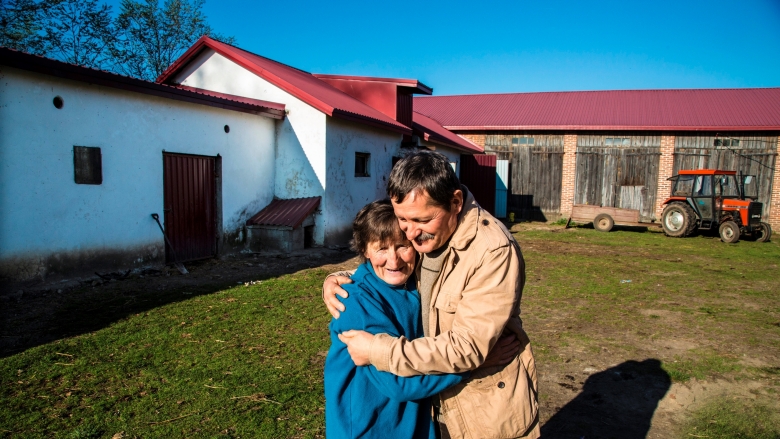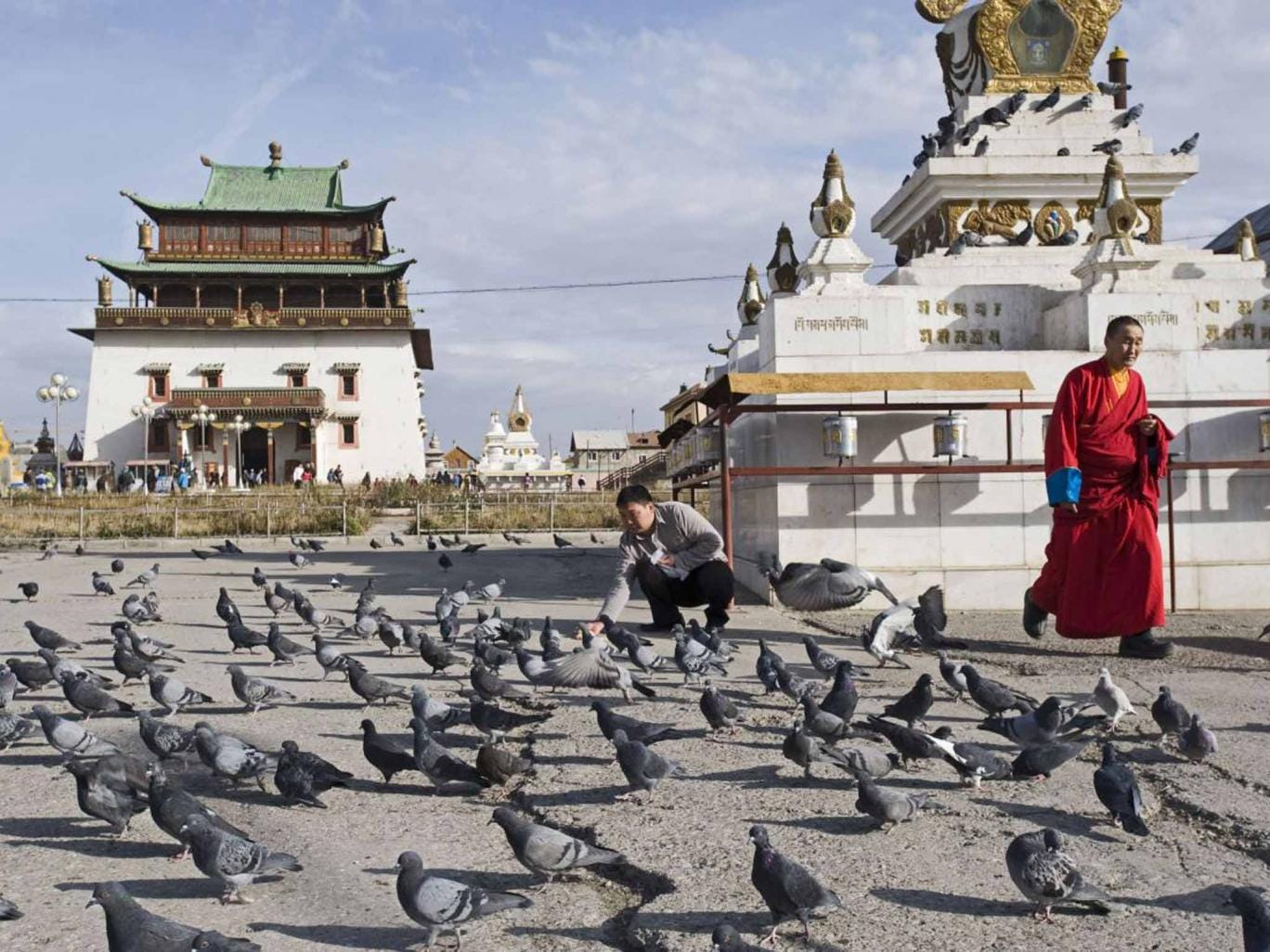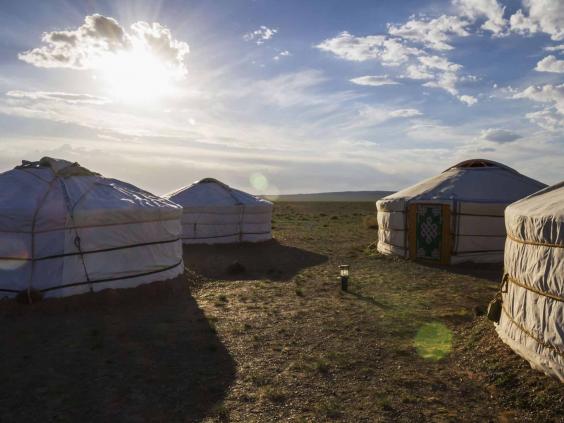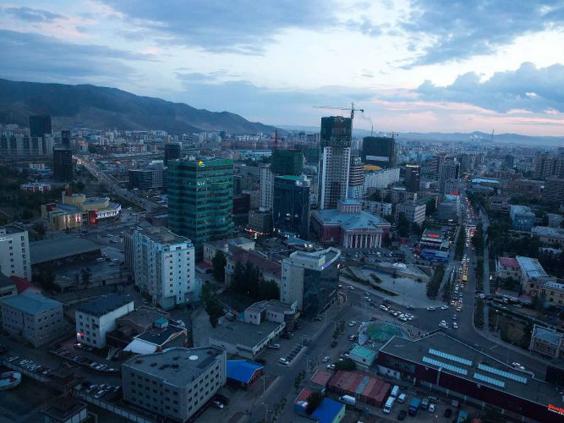Mongolia Holdings, Inc. (OTCQB: "MNHD") and Monroad, LLC are pleased to announce that they have entered into a Contribution and Exchange Agreement. Upon completion, Monroad will become a wholly owned subsidiary of Mongolia Holdings (the "Company"). In exchange, Monroad will receive preferred shares of Mongolia Holdings convertible into an amount equal to approximately 49% of the outstanding shares of Mongolia Holdings at time of the Closing. Some of the conditions precedent to closing include the conversion of certain debt obligations to equity, a $2.00 per share trading price and capital sufficient to execute the new business strategy of the combined companies. Additional details are available in the MNHD Form 8-K filed with the SEC on December 29, 2015.
Founded in 2001, Monroad is recognized as one of the largest road construction and earth moving companies in Mongolia. Monroad offers a full range of construction services including the construction and maintenance of roads, bridges, railroad lines, drainage work, earthwork, flood protection dams, and heavy equipment rental. Monroad counts the Mongolian government and Oyu Tolgoi LLC (Rio Tinto's Turquoise Hill Mine), as two of its largest completed-project customers. Monroad's most recent audited financial statements report revenue of 36,286,005,641 Mongolian Tugriks, or $19,214,805 USD as of December 31, 2014. Audited results for the year ending 2015 will be disclosed in a subsequent Form 8-K to be prepared and filed by Mongolia Holdings.
The Company's President, Brad Siniscalchi, a 23-year veteran of Hertz Equipment Rental, commented: "This transaction marks a significant breakthrough for our 2016 business strategy. Monroad's existing facilities, capabilities and staff should significantly streamline and expedite the deployment of our Hertz Equipment Rental franchise operation in Ulaanbaatar, while potentially saving significant hard and soft launch costs. Mongolia Holdings will now possess a much wider array of capabilities necessary to meet growing demands for equipment and construction services, driven in part by international infrastructure development initiatives like 'One Belt, One Road' and mega-mining industry projects like Oyu Tolgoi."
Tengis Garamgaibaatar, CEO of Monroad, stated: "Although it has not previously been our core focus, Monroad has operated an equipment rental business in Mongolia for many years. We plan to bring Monroad's facilities, equipment, highly-trained staff, equipment maintenance capabilities, logistics, market knowledge, reputation and enthusiasm to the deployment and build-out of Hertz Equipment Rental operations throughout Mongolia. The expanded platform makes us better prepared to tackle larger projects and to more aggressively execute the growth strategy of our existing road building and earth moving operations. We believe that the systems and efficiencies of Hertz and the talent and experience of the combined management team will create many advantages for Mongolia Holdings for years to come."
Chairman of Mongolia Holdings, Former US Ambassador Michael Ussery, said: "In addition to all the obvious benefits of this transaction, the consolidation of Monroad into Mongolia Holdings facilitates the assimilation of 15 years of market knowledge, experience and relationships, which cannot be easily replicated by other market participants. In addition, with the recent $4.4 billion financing announcement of Rio Tinto's expansion of the Oyu Tolgoi mega-mine, it's not unreasonable to expect greater economic growth for this exciting market, which, in turn could measurably increase demand for Monroad's road construction and earth moving services."
About the Company:
Mongolia Holdings, Inc., through its wholly-owned subsidiary Mongolia Equipment Rental Corporation, is the Hertz Equipment Rental franchisee for Mongolia. This exclusive franchise allows the Company to operate a business of renting, selling, and maintaining equipment for use in construction, mining, materials-handling, commercial, and industrial activities in Mongolia under the unique plan and system of Hertz Equipment Rental Corporation and Hertz Equipment Rental System. In 2014, the Company formed two wholly-owned operating subsidiaries in Mongolia called HERC, LLC and Equipment Rental, LLC. When qualifications are met, Mongolia Holdings intends to apply for an up-listing to the NYSE Markets, NASDAQ, or another US national securities exchange. While the Company is confident in its plans, it can offer no assurances that it will be successful in listing on an exchange of its choice. Upon closing with Monroad, it will also be one of the largest road construction companies, and best-known brands in Mongolia.
About Mongolia:
Mongolia has recently been one of the fastest growing economies in the world, led by the extraction of vast deposits of copper, gold, uranium, iron ore, coal and other commodities. Its proximity to four of the largest economies in the world -- China, Russia, Japan, and South Korea -- creates trade and cross-border investment opportunities that are distinct from those available to competing resource-rich countries. Management believes that these natural advantages, along with recent pro-business changes in foreign investment rules, securities laws, and mining regulations, have the nation poised for sustained growth of construction, infrastructure development and industrialization. Mongolia is an independent democracy of approximately three million people dedicated to becoming an important economic hub and transportation corridor of Eurasia.
For more information, please visit : http://www.mongoliaholdings.com
Founded in 2001, Monroad is recognized as one of the largest road construction and earth moving companies in Mongolia. Monroad offers a full range of construction services including the construction and maintenance of roads, bridges, railroad lines, drainage work, earthwork, flood protection dams, and heavy equipment rental. Monroad counts the Mongolian government and Oyu Tolgoi LLC (Rio Tinto's Turquoise Hill Mine), as two of its largest completed-project customers. Monroad's most recent audited financial statements report revenue of 36,286,005,641 Mongolian Tugriks, or $19,214,805 USD as of December 31, 2014. Audited results for the year ending 2015 will be disclosed in a subsequent Form 8-K to be prepared and filed by Mongolia Holdings.
The Company's President, Brad Siniscalchi, a 23-year veteran of Hertz Equipment Rental, commented: "This transaction marks a significant breakthrough for our 2016 business strategy. Monroad's existing facilities, capabilities and staff should significantly streamline and expedite the deployment of our Hertz Equipment Rental franchise operation in Ulaanbaatar, while potentially saving significant hard and soft launch costs. Mongolia Holdings will now possess a much wider array of capabilities necessary to meet growing demands for equipment and construction services, driven in part by international infrastructure development initiatives like 'One Belt, One Road' and mega-mining industry projects like Oyu Tolgoi."
Tengis Garamgaibaatar, CEO of Monroad, stated: "Although it has not previously been our core focus, Monroad has operated an equipment rental business in Mongolia for many years. We plan to bring Monroad's facilities, equipment, highly-trained staff, equipment maintenance capabilities, logistics, market knowledge, reputation and enthusiasm to the deployment and build-out of Hertz Equipment Rental operations throughout Mongolia. The expanded platform makes us better prepared to tackle larger projects and to more aggressively execute the growth strategy of our existing road building and earth moving operations. We believe that the systems and efficiencies of Hertz and the talent and experience of the combined management team will create many advantages for Mongolia Holdings for years to come."
Chairman of Mongolia Holdings, Former US Ambassador Michael Ussery, said: "In addition to all the obvious benefits of this transaction, the consolidation of Monroad into Mongolia Holdings facilitates the assimilation of 15 years of market knowledge, experience and relationships, which cannot be easily replicated by other market participants. In addition, with the recent $4.4 billion financing announcement of Rio Tinto's expansion of the Oyu Tolgoi mega-mine, it's not unreasonable to expect greater economic growth for this exciting market, which, in turn could measurably increase demand for Monroad's road construction and earth moving services."
About the Company:
Mongolia Holdings, Inc., through its wholly-owned subsidiary Mongolia Equipment Rental Corporation, is the Hertz Equipment Rental franchisee for Mongolia. This exclusive franchise allows the Company to operate a business of renting, selling, and maintaining equipment for use in construction, mining, materials-handling, commercial, and industrial activities in Mongolia under the unique plan and system of Hertz Equipment Rental Corporation and Hertz Equipment Rental System. In 2014, the Company formed two wholly-owned operating subsidiaries in Mongolia called HERC, LLC and Equipment Rental, LLC. When qualifications are met, Mongolia Holdings intends to apply for an up-listing to the NYSE Markets, NASDAQ, or another US national securities exchange. While the Company is confident in its plans, it can offer no assurances that it will be successful in listing on an exchange of its choice. Upon closing with Monroad, it will also be one of the largest road construction companies, and best-known brands in Mongolia.
About Mongolia:
Mongolia has recently been one of the fastest growing economies in the world, led by the extraction of vast deposits of copper, gold, uranium, iron ore, coal and other commodities. Its proximity to four of the largest economies in the world -- China, Russia, Japan, and South Korea -- creates trade and cross-border investment opportunities that are distinct from those available to competing resource-rich countries. Management believes that these natural advantages, along with recent pro-business changes in foreign investment rules, securities laws, and mining regulations, have the nation poised for sustained growth of construction, infrastructure development and industrialization. Mongolia is an independent democracy of approximately three million people dedicated to becoming an important economic hub and transportation corridor of Eurasia.
For more information, please visit : http://www.mongoliaholdings.com











